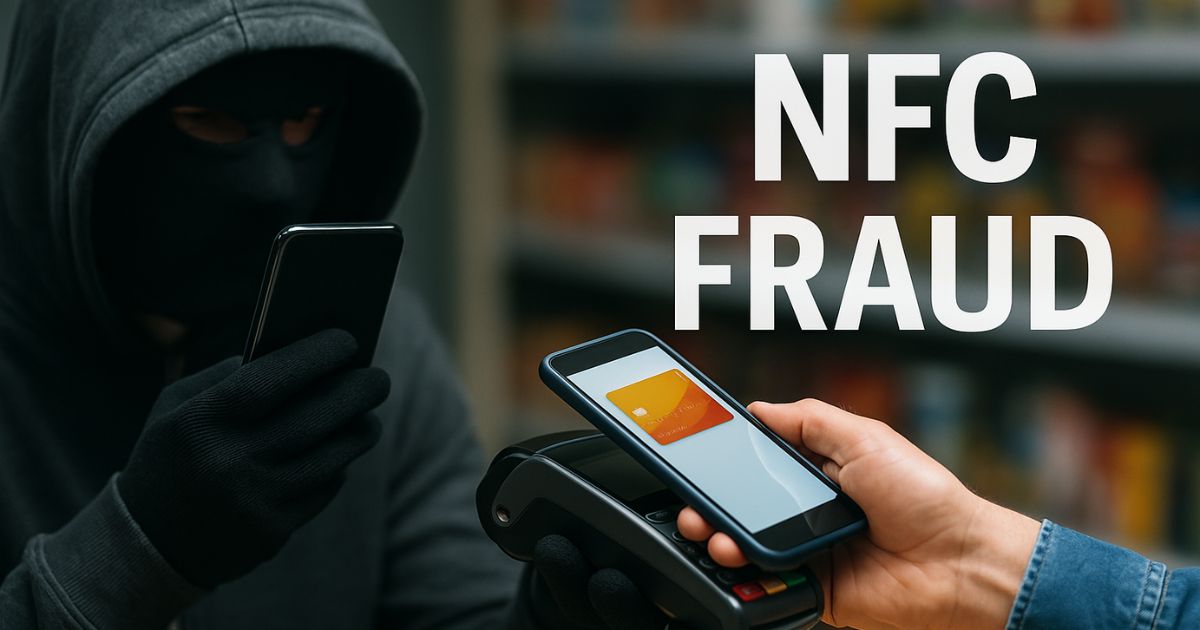NEW DELHI: Cybercriminals are weaponizing Near Field Communication (NFC) technology to defraud consumers and banks worldwide, with Chinese threat actors at the heart of a sophisticated fraud ecosystem, according to a new report by cybersecurity firm Resecurity.
The report reveals that NFC-based fraud, once considered a niche concern, has now become a serious global issue, costing financial institutions millions and leaving everyday users vulnerable to silent theft via their smartphones and payment cards.
ALSO READ: Call for Cyber Experts: Join FCRF Academy as Trainers and Course Creators
NFC Fraud Spreads Globally
From major cities in the U.S. to financial hubs in the UAE and the UK, banks and fintech companies are grappling with a spike in NFC-related scams. These crimes often go undetected until significant damage is done.
In the first three months of 2025, one Fortune 100 financial giant in the U.S. reported losses running into several million dollars—just from NFC fraud alone.

“This is not just petty crime anymore,” said a Resecurity analyst. “We are talking about highly organized operations, with technical expertise and a global reach.”
How the Scam Works
NFC technology allows users to pay by simply tapping their phones at a terminal. But fraudsters have figured out how to turn this into a loophole.
- They use specially designed apps to clone credit cards stored in mobile wallets like Google Pay and Apple Pay.
- By relaying stolen NFC signals, they can make purchases or withdraw cash remotely.
- Techniques like “Ghost Tap” allow them to simulate legitimate transactions, often slipping under the radar.
These scams rely on Host Card Emulation (HCE), which tricks payment systems into thinking they’re dealing with real cards.
Z-NFC: The Cybercriminals’ Tool of Choice
Resecurity’s investigation into a tool known as Z-NFC offers a rare look into how advanced these operations have become.
Z-NFC, disguised as a harmless app, allows criminals to:
- Load stolen card data onto Android devices.
- Bypass standard security checks using encrypted code.
- Simulate real credit card behavior at payment terminals.
The app is sold on Chinese-language Telegram channels, complete with tutorials and technical support.
Organised Crime with a Global Target List
Most of these fraudsters are believed to be operating out of China, often as part of larger, loosely affiliated crime syndicates. Some may even have state backing or protection.
Their primary targets include:
- The U.S., UK, EU, Australia, and Canada.
- Emerging markets like the UAE, Saudi Arabia, and the Philippines.
In these regions, high contactless payment adoption has made NFC a preferred attack vector.
POS Terminals and Loyalty Points: New Frontiers
The fraud doesn’t stop at cards. Cybercriminals are:
- Selling NFC-enabled POS terminals on the Dark Web.
- Registering these terminals through fake businesses for money laundering.
- Exploiting loyalty points from airlines, fuel stations, and hotels.
ALSO READ: Dark Web Goldmine: DeepSeek Hack Leaks Over a Million User Records
“These attackers are creative and relentless,” said the Resecurity analyst. “They’re using everything from stolen card data to e-SIMs to stay ahead of law enforcement.”
Why It’s Hard to Stop
One reason NFC fraud is so hard to contain is the sheer speed and volume of transactions. Many contactless payments under a certain limit don’t require PINs or signatures, giving criminals an easy way in.
Plus, many of the malicious apps aren’t available on Google Play—they’re sideloaded, making them difficult to trace or block.
A Growing Threat
The report warns that as more people switch to contactless payments, the risks will only grow.
- An estimated 1.9 billion phones now support NFC.
- In Saudi Arabia, 98% of in-person payments are contactless.
Without stronger security measures, NFC fraud could soon rival more traditional forms of financial cybercrime.
What’s Being Done?
Some countries, like the U.S., have started cracking down. In October 2024, agencies like the FBI and Secret Service issued warnings about NFC-based fraud tools like Track2NFC.
But international coordination remains a challenge, especially when many cybercriminals operate in countries that are difficult to reach.
NFC was supposed to make life easier. But now, it’s giving cybercriminals an easy way to steal.
“Consumers need to be aware, and companies need to act fast,” the Resecurity analyst warned. “This isn’t just about money. It’s about trust in the digital systems we use every day.”
As the line between convenience and security blurs, the world faces a tough question: how to keep the future of payments safe from those determined to exploit it?


